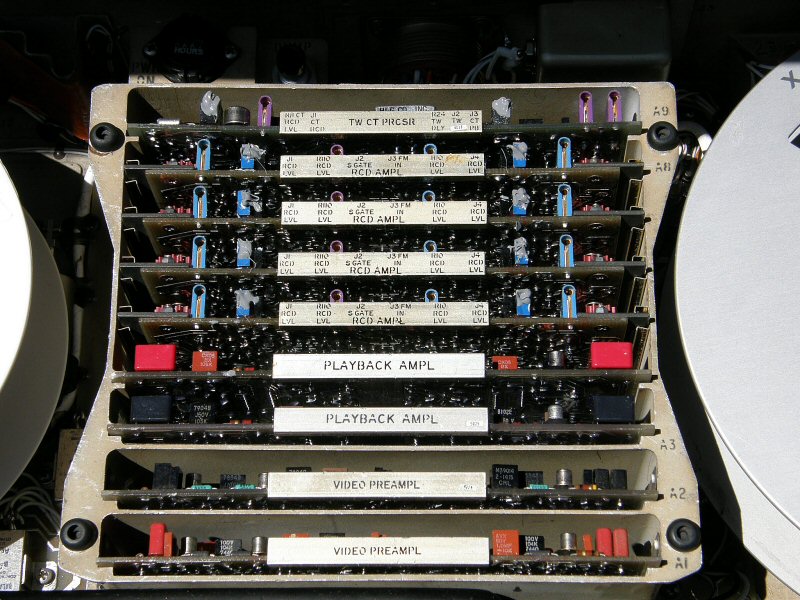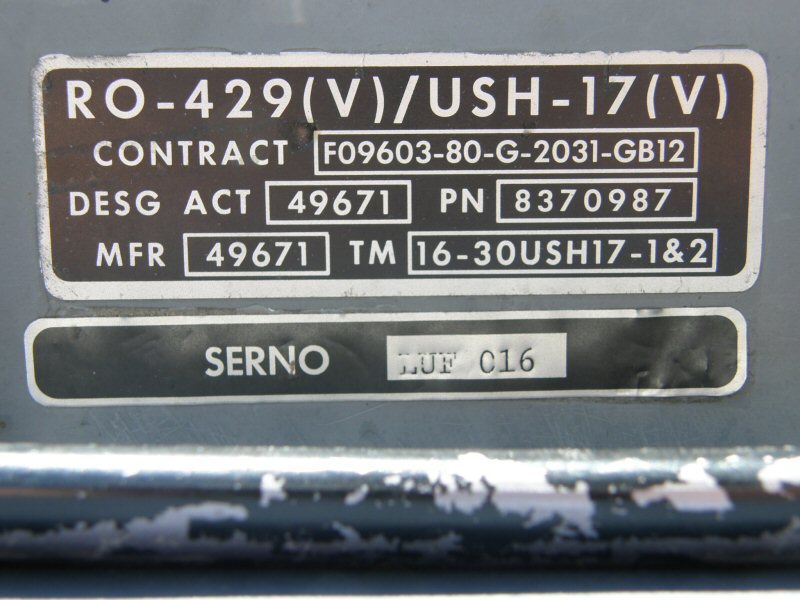LabGuy's World: GE Two Inch Octaplex Mission Recorder
New Addition! 080602












1967? General Electric Octaplex (8 head) Military Mission Recorder
Here is a nice new VTR for the collection. Well, it is the transport portion of a totally cool VTR anyway. Made by GE for the American Military in the 60s or 70s, it was used to record radar and video during missions aboard an aircraft. Designated the RO-429(V)/USH-17(V), I have shortend the model number to USH-17 for these pages. For a two inch "quad" style machine it is amazingly compact! According to Tim Stoffel, the Octaplex, or eight head, configuration allowed for the recording of two parallel streams of video simultaneouly on one tape saving space and weight. Until now, I had only read about such systems. Referring to my books, The History of Television by Albert Abramson, I find no reference to anything like this. And that is remarkable in itself! Abramson produced the most detailed accounting of VTR evolution of any author.
The engineering is incredible in this machine. All motors are of the printed circuit variety, except for the head/scanner motor which is a two phase ball bearing type. In the quad version of this system, the rotational speed of the head wheel is 14,400 RPM. I can not say with any certainty what the head roation speed was for this machine. But, it would be within that range. Likewise I do not have a figure for the longitudinal tape speed. But if I had to guess, I would say either 7.5 IPS or 15 IPS, just because. Military video could be standard video. But did not necessarily have to be. In front of the heads, is a movable vacuum guide that both shapes the tape correctly and precisely presents the tape to the high speed video heads. Vacuum for this guide must be produced within the head motor somehow. Note the small rubber hose connecting the guide assembly to the head motor base. If you look closely, you can see the control head at the base of the curved guide in the photo where the guide is open. A small lever near the vacuum guide unlatches the guide for easier tape threading.
The deck is surprisingly compact and light, as these things go. It is approximately 24 inches wide, by 16 inches deep and less than eight inches thick! It weighs less than 40 pounds. I suppose it must meet those spec's to qualify for its use in a military fighter plane. The material appears to be an aluminum/berrylium alloy with that characteristic butter yellow color. Apollo space capsules were made from a single piece of the same material. Or, perhaps, it is only yellow anodized aluminum.
There are components missing. There are three large canon style military grade multi pin connectors on the rear of the transport. One is obviously for DC power, one must go to the cockpit control head and the last going to an additional electronics bay with the rest of the electronics. This would most likely contain the transport control logic and motor driver amplifiers. The cards seen in the photos mostly are for head signal processing. If you know of the location of other components of this system, please contact me. It would be sweet to reassemble a complete system for display and/or demonstration.
|